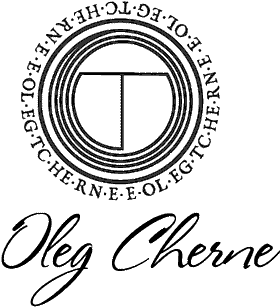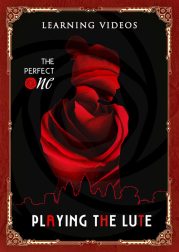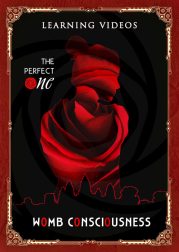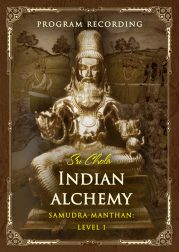Indian Alchemy
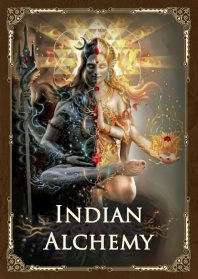
Without understanding alchemy, we destroy energy every day. And you will have to die, and maybe even today.
Sri Chola
Indian alchemy is a special phenomenon on the alchemical map of the world. It consists of three fundamental pillars: Yoga (the path of liberation), Tantra (the path of ascent), and Rasayana (the path of light).
The division of these paths is conditional, but it is important to keep these directions in mind when we talk about Indian alchemy. Each of them is characterized by a different mentality and focus on the tasks of improving a particular part of one’s nature. At the same time, they are all united by the same concept of rebirth.
To understand Indian alchemy it is important to pay attention to the nature of the Indian mentality, which differs in the nature of the perception of the spirit. This united many currents under the common goal of spiritual liberation.
The foundation of the formation of alchemy can be observed in the sacred texts of the Mahabharata and the Ramayana, where it is represented by the concept of churning.
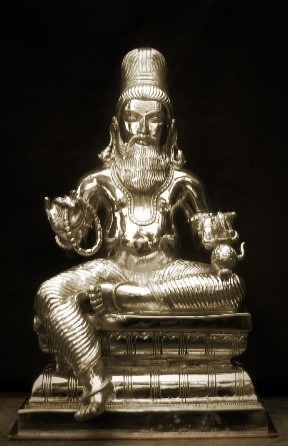
The Indian mentality brings its own important concepts. For example, important to Indian alchemy is the image of the siddhara (Tamil, from Sanskrit “siddha”), the perfect individual who has achieved the ability to control the spiritual forces called siddhas.
It was the mentality that shaped the attitude towards alchemy during the mystical period of 4000-5000 B.C. But in general, Indian alchemy was a legacy of the Vedas and Brahmanism, which formed various systems of yoga, and was influenced by Shaktism and Tantra. So Indian alchemy is also a set of rules and injunctions leading to liberation, not just transformation.
Over time it became the product of synthesis not only of purely Indian currents but also absorbed the classical ideas of Daoist alchemy and the later Himalayan and Tibetan alchemy. And it was even influenced by Khmer alchemy, which presents the idea of a transformation process, not just liberation, which is associated with the image of churning the Heavenly, or the Ocean of Milk (Samudra Manthana). This process is associated with the triggering of the Shakti energy, which requires not only receiving amrita (heavenly breath) and producing soma (immortal nectar), but also the refining of this energy.
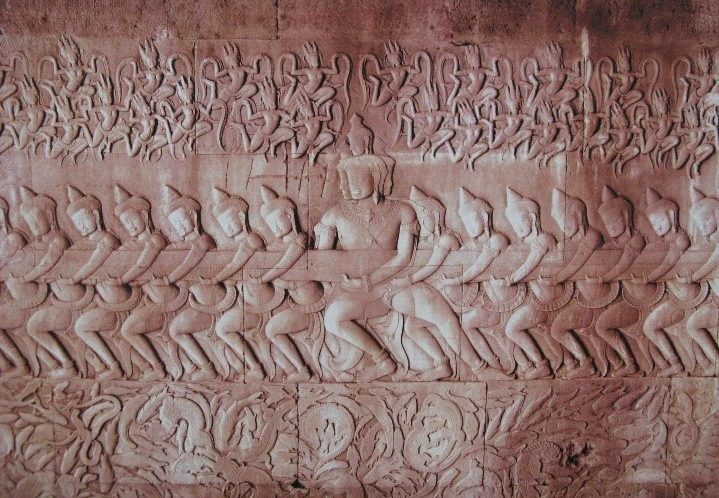
Samudra Manthana
- The power of Mahavishnu’s awakening — Vishnu consciousness.
- The condition of Sri (Lakshmi) — Accumulation of energy.
- The tortoise shell of Kurma — Support.
- Mountain Mandaranchal — Axis.
- Serpent Vasuki — Spiral.
- Varuni’s transforming beginning — Ecstatic state.
- Apsaras — Process of transmutation.
- Shankha crucible formation — Atanor, crucible.
- Sharnga — Penetration.
- Surabhi — Ability to materialize.
- Parijata tree — Alchemical grain.
- Kaustubha stone — Immortal body.
- Kalpavriksha — The great manifestation.
- Airavata — The formation of the supreme power.
- Uchchaihshravas — The formation of the supreme power.
- Chandra — Nourishment of light.
- Obtaining amrita.
- Refining of amrita.
The understanding of the alchemical transformation process was formed quite early in India based on Vedic knowledge, which gave rise to various strands of yoga. This, in turn, created a diversity of currents that offered their own processes of purification, change of tonality, and liberation. Over time this developed into tantra, a particular current where Vajrayana, which leads to the end of rebirths, emerged. Well, many other mixtures and varieties of tantra made the whole region alchemical.
At the same time, alchemy in its pure form never took root in lowland India, and we can rather see its manifestations in the Himalayas, Tibet, and even in Pakistan and Cambodia, where it mixes with folk beliefs and shamanism.
Yoga itself continued to be dominated by ideology, with its key concepts of karma and liberation. And despite the fact that various mystical and magical elements appeared in it as well, the bearers of this knowledge are traditionally assigned the role of fakirs. And manifestation of siddhas in yoga adepts is not so much a demonstration of adherence to the alchemical path as it is caused by exceptional prenatal abilities of some yogis, which, in essence, implement the whole same concept of reincarnation.
Achieving the quality of a jivanmukta (one who has been freed from the influence of karma during life by emerging from the cycle of births) under these conditions points primarily to a sufficiently high level of prenatal nature, which does not allow us to define this as the result of an alchemical process. In other words, those born with parijata or kaustubha (see above) are usually deprived of the basic properties of alchemical transformation. And despite the fact that they still need a lot of effort, they are born with the most important thing – the inner support, the grain. And while an ordinary person is often in a state of grief or confusion and still needs to form the beginning of transformation, a future jivanmukta already has everything needed to become one.
This leads to distortions of many not only alchemical principles but also of yoga and tantrism, where one maithuna (tantric intercourse) is enough to show how easy it is to do whatever one wants under the guise of development rather than whatever is necessary. This has worked especially well in the Western mindset, for which orgasmic cults are closer to any internal discipline.
So over time not only Indian alchemy, but also Indian yoga and tantra have fallen into decline, and today they depend not so much on real experience as on a mentality that is incommensurable with the original Hindus. Basically what we see today is only outward imitation and what can be assimilated by the masses. And even if we pay attention to the various ascetics (the same Kapalikas), we encounter a different, more marginal attitude, and a particular mentality that points to a profound renunciation of the external world but does not provide the tools for personal transformation. So it is all the same liberation and purification.
This Mahakala (destruction of the outer to save the inner) is good if there is personal power, otherwise it all resembles a great Indian bath, making a ritual fetish out of the process of purification and cleansing. But even that sooner or later becomes another kind of sensual pleasure. So India, a treasure trove of the knowledge of many secret things, willingly or not, contributes to a simplified perception of them, especially among bearers of the Western mindset.
And yet, as far as Indian alchemy is concerned, the concept of the yogi must be at the heart of it, regardless of whether it represents yoga, tantra, rasayana, or Indian alchemy with its concept of churning. And this means that consciousness must commit to the causality of the Absolute (the sound of “Om”), and this requires power (Shakti).
A yogin is one who engages in awareness of the physical body (asana); of the energy body by mastering energy-breathing (pranayama); of the spiritual body by eradicating negation (pratyahara); of having medial consciousness (dharana) and having mastered alchemical mindfulness, contemplation (dhyana). All of these aspects determine the quality not only of the yogi, but also of those involved in the science of alchemy.
The yogi is the avadhuta (the one who has overcome the duality of the material world). But for all that, the concept and use of energy in yoga is aimed at liberation from the physical body, and the process of awakening the kundalini is aimed at the same. Hence the particular perception of energy centers and chakras, which have overshadowed the importance of adharas (zones associated with energy transformation), the emphasis on which occurs more in tantra and, of course, in alchemy.
So in the dimension of the depths of Indian tradition (as well as mentality, for that matter), it is impossible to understand it without becoming a yogi in practice. Although an ideological commitment to Brahmanism, Jainism, or Buddhism is also an important factor. Or generally renouncing everything that can be defined as a form of sectarianism.
All this has shaped the pathways between liberation and the attainment of immortality, where tantrism, alchemy, yoga, and the practice of ascetic sadhus merge. This also complicates the process of transmitting the teachings, where often an irrational transmission is given instead of a rational one (such as going into an ecstatic trance).
Anyway, the Indian tradition does not pay much attention to the prepared body (pakwa) or the unprepared body (apakwa) – due to the same mentality focused on the knowledge of karma, because for yoga and even tantra this is not crucial. Moreover, for yoga and tantra leading to liberation, alchemy can even be an obstacle. It’s like, “we’ll continue in the next life, we don’t have to distract from what we have.” For alchemy, involvement is fundamental, because the True Body is a certain inner state.
From the position of body perfection, it is certainly important that Ayurveda developed in parallel with the development of alchemy, based on which we have the direction of external Rasayana alchemy, which is undoubtedly of interest despite the complexity and confusion of the presentation. This is especially true on the subject of taking mercury-containing substances, where mercury is understood to be both a certain state of the body and a way of fusing energy and light.
The alchemical importance of mercury is, of course, evident in all alchemical currents. It is a matter of potion, not only external but also internal, and at the same time, it is a process of engagement. In general, it is a process of materialization of the higher, of transformation into a more perfect substance (the higher being light).
Alchemical mercury (which is how it should be positioned) allows one to bind the molecules and atoms of the body and, consequently, to change the size of the cell. Of course, external alchemy is important, especially in the condition of having to purify the body or conserve and increase energy before the adept learns to transform matter using his special power (Riddhibala), using the power of concentration (Samadhibala). But both the very process of increasing energy, transformation, and the power of consciousness are related to the concept of alchemical mercury. Thus, alchemical mercury is important in shaping the conditions of transformation because it binds and strengthens the body.
But from the perspective of alchemy, the idea of liberation from the body (as well as the achievement of total holiness) leading to the state of “jivanmukta” literally and figuratively pushes for “alchemical suicide,” where the external perception of mercury is directed toward total purification and, ultimately, release.
It is the preservation of the personal soul (jiva) so that it does not perish in this world that creates the whole direction of the attitude toward mercury. Behind this is both the attitude and the understanding of soma as an alchemical elixir. The challenge with the issue of mercury is the multitude of different sources and the abundance of information on the yogis’ use of mercury, which is misleading to many.
Of course, one could argue that we are already taking mercury, because it is everywhere – in the soil, in the atmosphere, in the water, in processed food, and simply in various foods. But it’s also a question of what is trapped in us and what it leads to. And, most interestingly, where in the body it can accumulate and be naturally trapped. Mercury has a tantric quality about it, and generally, we can say that tantra expresses the quality of mercury, because it forms a pronounced cumulative quality.
It is especially expressed in the kidneys (which, by the way, also leads to a particular understanding of sexuality in tantra). Mercury is also found in the brain and liver, but alchemical mercury has yet to be made from it. Most of the mercury is in the cellular elements, which is what creates a certain state of tonality when aroused. And it is a whole process of formation, otherwise, it would immediately destroy the body. The mercury that accumulates in the body is naturally used to create the Mercury Body or Alchemical Body, and this is a complex process. The preparation of mercury is part of the process of making amrita. And it is a very different quality of mercury than is recorded as the chemical element Hg.
Thus, Rasayana is the direction associated with the creation of the elixir, and whether one views it as external or internal is not important. What’s important is to differentiate between the process of creating the elixir itself and the process of assimilation and even more so refining it, which is also associated with the concept of race (rasa), i.e., radiance.
Rasayana as a method can lead to both liberation and transformation. And in connection with the task of liberation, the external ingestion of mercury is sort of justified. Even so, it has to be prepared in order to achieve the skill of burning it out (Bhavana) for liberation. An important point is the process of purification of the spirit. There are alchemical processes for this, also related to Rasayana. Before the spirit can be released, it must be purified, followed by the transubstantiation of the body.
Speaking of Indian alchemy, one should take into account the concept and attitude towards death. That is, it does not exist in this concept. Life for most Hindus is not only a biological process but also an energetic and spiritual one. Whereas for the Westerner, death is metaphysical, a tragedy, not understood or accepted, for the Hindu it is fundamentally a process of transition and reincarnation. Death for the Hindu is the realm from which one returns. Consequently, in the Hindu tradition, the relationship is not with death, but with the spirit.
And it is precisely the acceptance of death or the fear of it that plunges one into the experience of passivity, of doing nothing with oneself. And this is especially dangerous for the mentality because one must prepare for the process of liberation. The path taken by the West, on the other hand, is “domestication of the nature of death,” rather than the development or even the maintenance of the spirit.
Death in this case is something that is closed off from experience, and the experience of acceptance is essential to understanding it. One must first understand the difference in the dying of physical and spiritual cells, which have different molecular masses. Otherwise, death, even if one prepares for it for a long time, will be sudden. The task of Rasayana, of course, is not to destroy a particular person, so they are to be released from the grip of death. But it is important to accept that the very root of being is our spirit.
That said, it is certainly important to emphasize that alchemy is a process of transformation and that death is not a transition, but the abandonment of some form. If death is uncertainty, the spirit is a certainty.
Of course, liberation is a radical way of self-identification, but it is preceded by important tasks. And this is where the tantric nature manifests itself. So it turns out that, given all of the above, Indian alchemy is a special kind of tantra.
